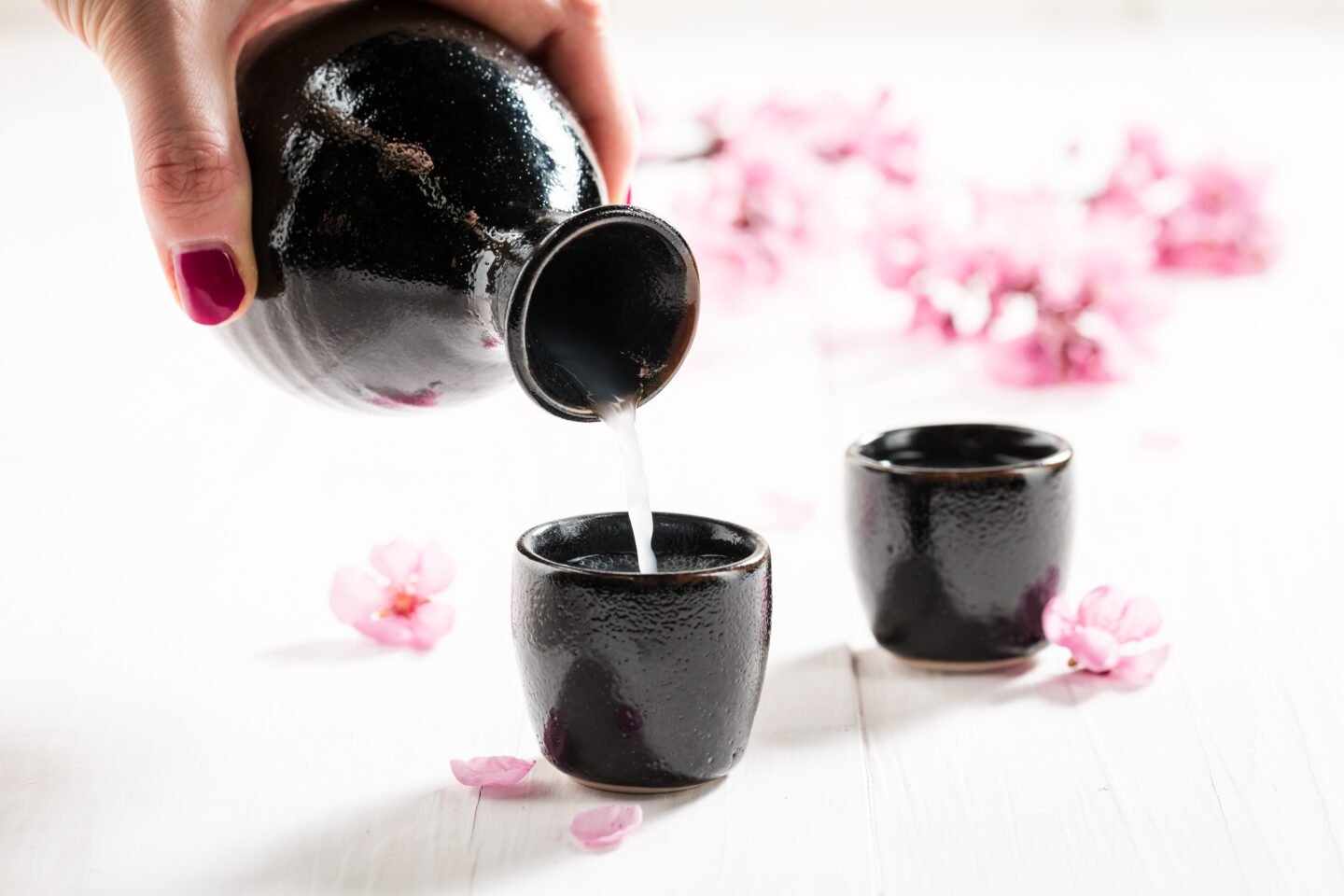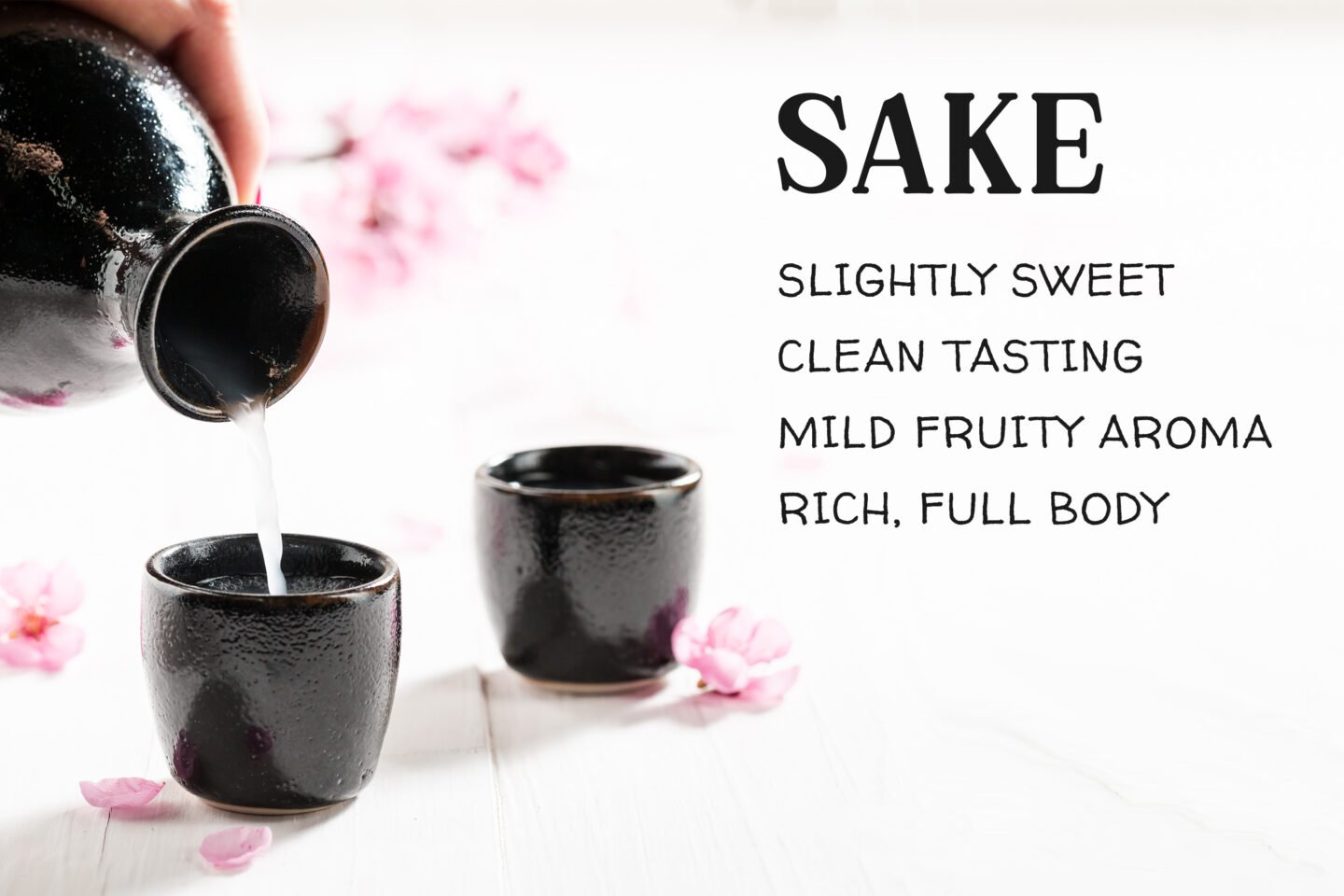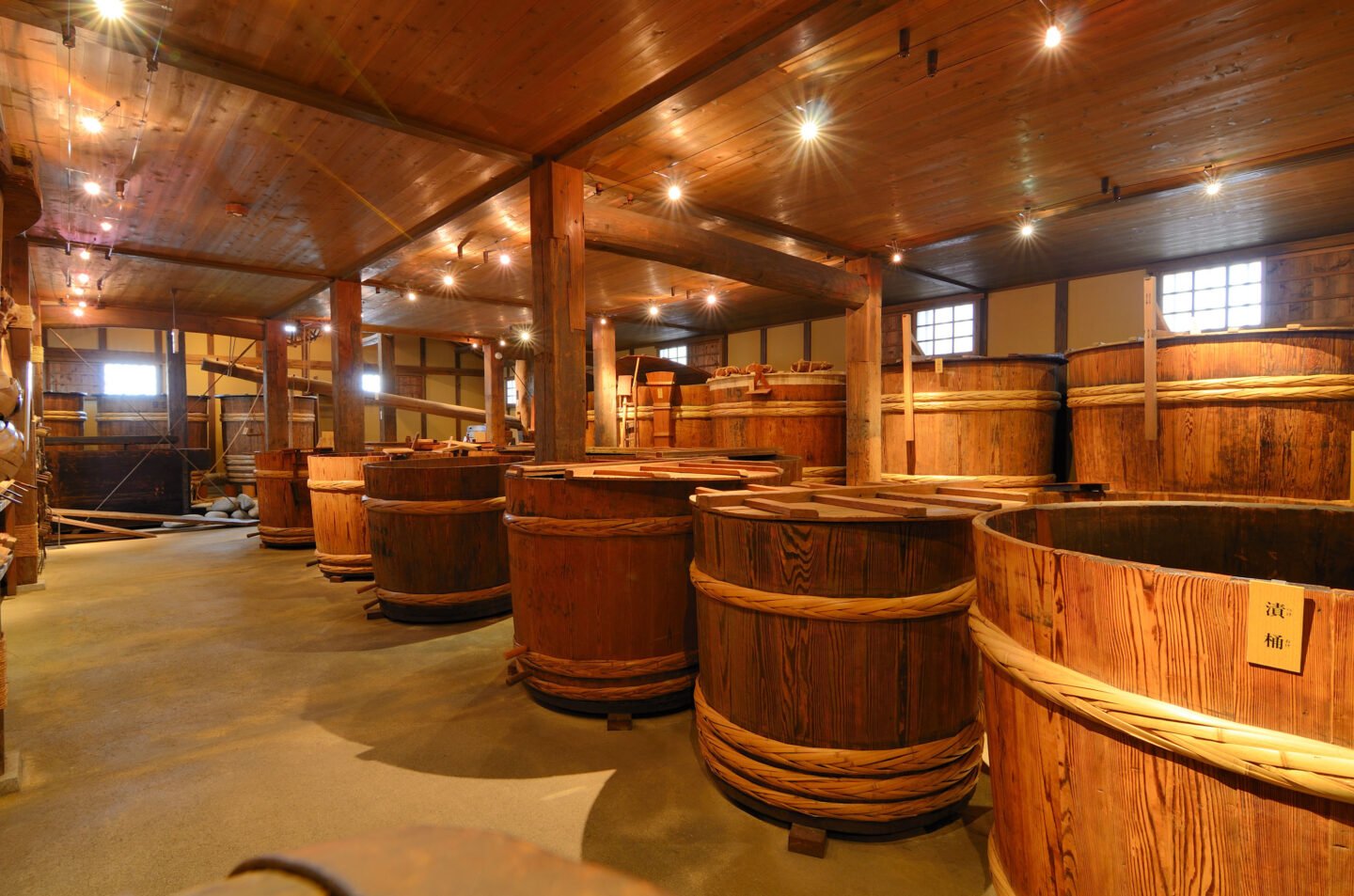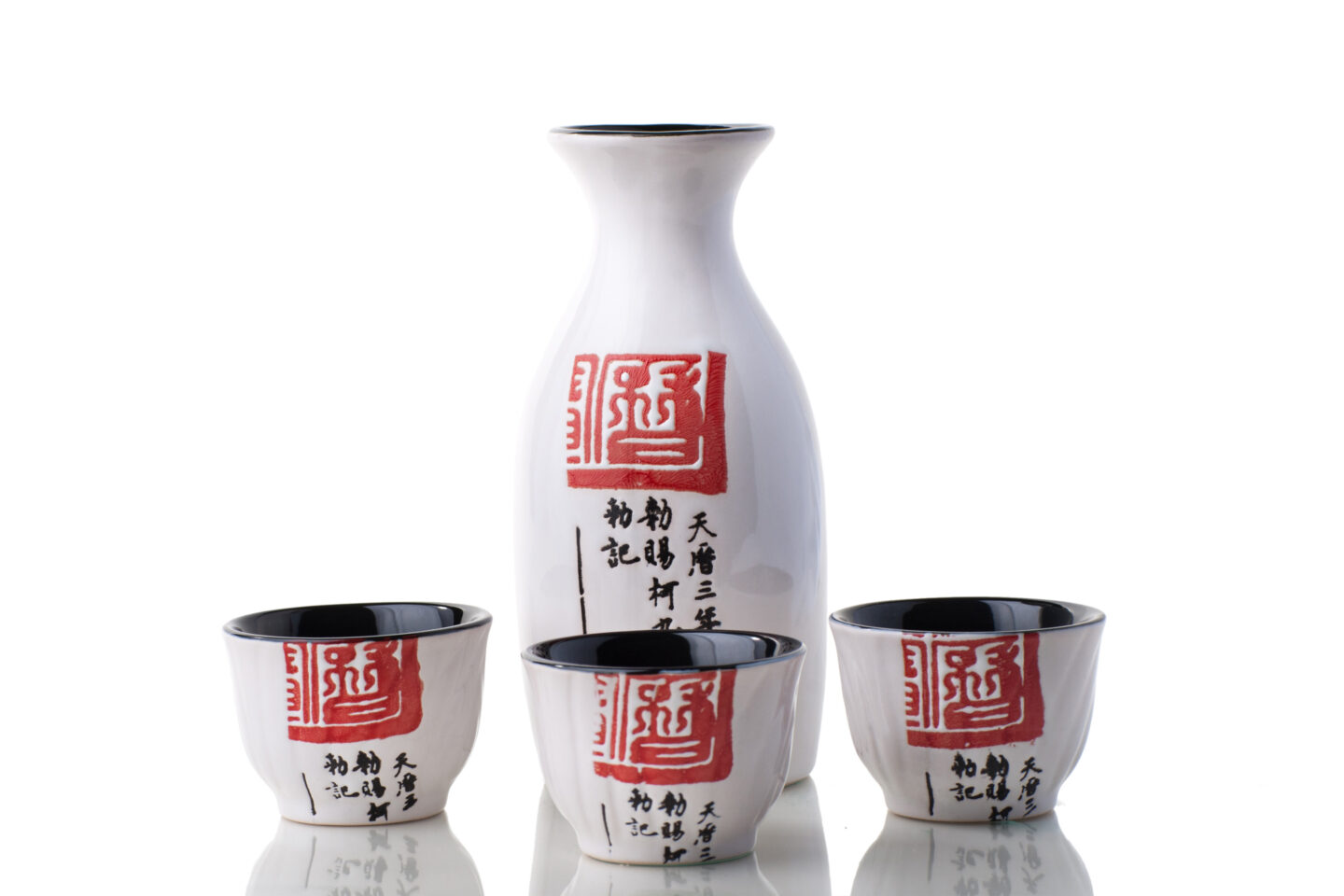Sake is an alcoholic beverage that’s made from fermented rice. Passionately consumed by the Japanese for more than 2500 years, it’s known as “rice wine” and has similarities to spirits, beer, and wine. If you’re thinking about trying this hootch for the first time, you’re probably wondering what does sake taste like? We’ll answer that question and provide loads more useful information, like how to drink it, store it, and how different brands vary in flavor. By the end of this page, you’ll be a "sake samurai."

Table of Contents
What does sake taste like?
Sake is a mildly sweet, clean-tasting drink with a well-balanced combination of astringent and savory flavors. It has a nutty, fruity aroma that is less pronounced than that of wine. A light beverage that's smooth and unassuming, sake is less harsh on the palate than spirits and doesn't have the strong hoppy, malty punch that beer has.
The aftertaste of sake tends to linger a little, although there is no stubborn aftertaste.
An important ingredient, koji, offers an additional savory aroma that could be best described as a cross between mushroom and potato. The gentle aroma of sake will disappear within a few minutes of being poured into the glass.
Sake has a rich, full body due to high levels of glutamic acid. The average bottle of sake will have around double the acidity of wine. This richness contributes to the umami taste of the drink.

Sweet Vs Dry
Most sake producers will give their product a "score,” indicating its level of sweetness or dryness. This measurement is known as nihonshudo, a measure of density, and can usually be seen on the label.
- A higher nihonshudo value will result in a drier-tasting, low-density sake.
- A lower nihonshudo value will result in a sweeter-tasting, high-density sake
How different brands differ in taste
| Type of sake | Taste |
|---|---|
| Honjozo | Light, smooth flavored, easy to drink. |
| Junmai | Intense flavor that’s mildly acidic. |
| Daiginjo | Premium sake that’s complex and light. |
| Ginjo | Complex, fragrant, light and fruity. |
| Shiboritate | Fruity, wild, similar to white wine. |
| Futsushu | Earthy rice flavor. |
| Nigori | Sweet, creamy taste. |
How polishing and junmai affect the taste of saki
Polishing
Early in the process of making sake, the rice kernels are polished to assist with exposing the starchy inside. Why does this impact you? The more the rice is polished, the higher the classification level and is often (but not always) associated with a higher quality product. When choosing sake at the store or a restaurant, check the label for the polished %. A premium sake will be polished 50-70%.
Junmai
Ingredient quality plays a major role in sake quality, especially the rice. The term junmai means pure rice and is highly desired by sake drinkers. A bottle that states it is junmai means that no additives or additional alcohol have been used to make the sake; only rice yeast, koji, and water.
Related Reading:
Check out our in-depth review of the best moonshine stills currently on the market.
Comparing sake, wine, and beer
| Sake | Wine | Beer | |
|---|---|---|---|
| Alcohol content (ABV) | 14-20% | 11.6% | 4.5% |
| Acidity | Low | High | Low |
| Amino acid levels | High | Medium | Medium |
If we are trying to find a close comparison to sake most would argue that wine is roughly similar. But keep in mind they do have some big differences:
- Sake’s high level of amino acid boosts its umami taste which makes it an excellent choice for pairing with a wide range of foods. The sweet, sour and salty flavors of Eastern cuisine, as well as many Western dishes combine very well with sake.
- Wine lovers who enjoy the aroma of a good bottle will firstly be hit by the lack of aroma emanating from sake. Rather than a powerful fragrant aroma, it offers a subtle fruity, nutty bouquet. Originally sake was produced with virtually no aroma and it wasn’t until the second half of the 1900s that fragrance became more of a focus.
- Sake has a milder taste than wine; it also doesn’t contain tannins which results in a less acidic product.
- The alcohol content of undiluted sake ranges from 14-20%, a little higher than wine which is often in the 12-15% range.
Comparing sake and soju
Sake is sometimes compared in taste to soju, a Korean-made clear, distilled drink. Although it has some similarities, there are some glaring differences:
- In addition to rice, soju is often made from ingredients like sweet potatoes and barley which results in a stronger aroma than sake.
- Soju has higher alcohol content, ranging from 16 to 53%.
- Soju is a South Korean beverage, sake is Japanese.
- A distillation process is used to make soju whereas sake is brewed.
How is sake made?
It has taken centuries to perfect the sake making process.
- Short-grain rice is refined (polished) until it becomes white. At this stage, the quality of ingredients (rice and water) play a big part in the end result.
- Combine water, polished rice, yeast and koji mold and allow the mixture to ferment. During this process starch from the rice reacts with the koji creating sugar. Then the yeast and sugar combine to produce alcohol.
- The shells of the rice are removed to increase the sweetness and the liquid is filtered, pasteurized and finally, bottled.

The unique process and ingredients result in a drink that packs a punch with undiluted sake ranging from 14-20% depending on the variety.
Which brands of sake are the best?
There are over 1700 brands of sake currently on the market offering an estimated 10,000 different products. If you’re looking for a good introduction to sake, then try Dassai, Kokuryu, Juyondai or Otokoyama—all quality products.
How to taste sake like a pro
Although this is hotly debated, sake can be consumed warm or cold. However, a premium bottle of sake should be drunk cold, so as not to influence the flavor or aroma.
Testing the taste and aroma
The process of taste testing sake is very similar to wine.
It is always wise to check the color of your sake for quality. It should be clear; a brownish color is a sign of oxidation and isn’t ideal.
Swirl the sake and inhale with your nose over the cup. You should detect subtle aromas that could range from fermented rice, savory, floral or fruity. As you inhale, take a small sip allowing the liquid to wash over all parts of your mouth. Gently chewing can help your taste receptors sense all the flavors. Exhale through the nose as you swallow.
Choosing a cup
Connoisseurs of sake recommend using a glass for high-quality brands as glass is a more neutral material that doesn’t impact the beverage. For a more traditional approach use an ochoko. One version of this cup is a Janome Choko which is a simple plain white cup with two blue lines marked on its bottom. This design helps the drinker assess the color and transparency of the beverage.

You’ll notice that a sake cup is very small. One reason for this comes down to Japanese tradition. In Japan, it borders on rude to pour your own drink. On the flip side, it is an honor to pour someone else’s drink for them. Having small cups means that there is more opportunity to pour drinks for other people and feel more honor.
Pouring etiquette
In a casual setting, anything goes. Although in Japan, you’ll still want to follow the custom of pouring other people’s drinks and letting them pour yours. That’s just how it works, so roll with it. After you’ve had a few, then it’s perfectly fine to pour your own.
In formal situations, a serving flask (tokkuri) is used to pour the sake into smaller cups (ochoko). If it’s your turn to pour, make sure to hold the tokkuri with both hands; this is considered polite. If you’re receiving the beverage from someone else, lift your cup off the table with one hand and support the bottom with your second hand.
How long is sake good for?
Sake will last 12-24 months in the fridge; however, it is best to drink it within one year of opening. An unopened bottle will store for up to 10 years. You can find out more about how to store sake here.
Related reading:
Yuzu is an exotic citrus fruit that's very popular in Japan. Would you like to learn more about it? Find out what yuzu tastes like and lots more with our in-depth guith.
Final Words
Asking the question "how does sake taste" is a lot like asking what wine tastes like. It is a broad question that is difficult to define in one sentence. Different brands, use of ingredients and manufacturing processes result in a wide range of flavors and aromas. I’d sum up sake as a mildly sweet, clean tasting drink with a well-balanced combination of astringent and savory flavor.
Sake doesn't have the powerful alcohol content that clear spirits like vodka or whiskey have. But it is stronger than beer and most wine so it can hit you hard if you get carried away.
Personally, I love the taste of one cup (a shot glass is even better) but would find it hard work drinking this booze all night.
My advice would be to visit a bar (izakaya) if you’re in Japan and try out as many brands as you can. Like all alcoholic beverages, it comes down to personal preference and no one can tell you what the best bottle of sake is for you.
Kanpai!

Leave a Reply